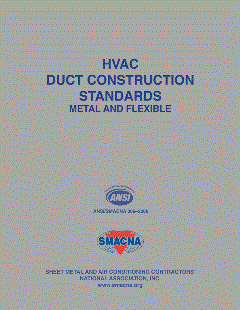
|
| © mariusz szczygieł - Fotolia.com |
Under the agreement, which still must be approved by the D.C. Circuit Court of Appeals, the nonweatherized furnace standards would be vacated and remanded, and the U.S. Department of Energy (DOE) would enter another round of notice-and-comment rulemaking this year, thus allowing all interested parties an opportunity to participate in the creation of a new minimum energy-conservation standard.
The settlement would not impact regional energy-efficiency regulations for central air conditioners, weatherized furnaces, and heat pumps, which will continue to follow the standards approved in the DOE’s direct final rule, and remain scheduled for a Jan. 1, 2015 implementation. In addition, standards for nonweatherized oil furnaces are not impacted by the settlement, and will become effective as scheduled, May 1, 2013.
Settlement
In a lawsuit filed Dec. 23, 2011, American Public Gas Association (APGA) challenged the energy-conservation standards for nonweatherized gas furnaces set forth in the DOE’s direct final rule, issued June 27, 2011. APGA argued against the substance of the standards, as well as the process that led to their adoption.
In light of those arguments, the DOE concluded, in a Jan. 11, 2013 agreement with the APGA, that it is appropriate to undertake new rulemaking proceedings to consider the appropriate standards and provide an opportunity for APGA, and others, to offer additional comments concerning any proposed standards.
Therefore, if the settlement is accepted by the court, nonweatherized gas furnaces in the 29 Northern states will not be required to meet a 90-percent AFUE minimum requirement starting May 1, 2013, as both the efficiency standard and implementation date have been rescinded. The court had yet to rule on the agreement at press time.
“It’s been a lengthy process and we’re glad it’s finally coming to an end,” said David Schryver, executive vice president, APGA. “We had a number of concerns with the rule, and the matter in which the DOE proceeded through the rulemaking process. Now, this takes us back to square one, where we’re hopeful that the DOE will consider this again, taking all comments and considerations into account.”
The Air-Conditioning, Heating & Refrigeration Institute (AHRI), as well as the Natural Resources Defense Council, the Alliance to Save Energy, the American Council for an Energy-Efficient Economy, and others joined as interveners in support of DOE.
Francis Dietz, vice president of public affairs, AHRI, said the settlement will have a minimal effect on the market.
“Statistics show that 90-percent AFUE furnaces already represent a significant market share of furnaces sold in the Northern states of the U.S. So, I don’t feel this ruling will have much of an impact,” he said. “While this settlement sort of takes away from the predictability of the market, we’re willing to proceed forward as is.”
Dietz said he was pleased that the APGA settlement didn’t eliminate air conditioners and heat pumps from the law.
“We didn’t want to see the air conditioner standards vacated, and we felt very strongly about that,” he said. “We anticipated that the furnace standards would be intact and now it appears as if the DOE is proposing something different. We’ll prepare for the next compliance date, which occurs in 2015, and let the DOE figure out the furnace standards, with input from our member companies.”
Heating, Air-conditioning, Refrigeration Distributors International (HARDI) and Air Conditioning Contractors of America (ACCA) also joined as interveners in the lawsuit, in support of APGA. All interveners had 10 days from the
Jan. 11, 2013 settlement date to file comments on the resolution.
Charlie McCrudden, vice president for government relations, ACCA, said the settlement will alleviate pressure caused by a May 1, 2013 compliance date.
“The settlement indicates that our concerns about the standards and the process were valid and it allows us all to start over,” he said. “But, remember, this is a settlement. No one party was declared a winner or loser.”
McCrudden said the Northern homeowner may benefit the most from this resolution.
“While homeowners may benefit from the comfort and energy savings a 90-percent AFUE furnace provides, they will no longer be required to purchase one,” said McCrudden. “We may now make a persuasive argument that the DOE should consider the cost of venting and condensate requirements, and consider a potential waiver, in their next ruling. Situations do exist where a furnace upgrade to a 90-percent unit simply isn’t economically practical.”
Jon Melchi, director of government affairs, HARDI, said the settlement is a win, although, not the complete victory HARDI had hoped for. “We feel the decision to settle is a bit premature, as the facts were in our favor,” he said. “This is sort of like kicking a field goal from the 5-yard line, on first down. But, sometimes, a few points are better than none.”
Melchi said he believes if the DOE erred in the process of developing its nonweatherized gas furnace standards, than it likely committed the same faults throughout its process for central air conditioners, heat pumps, and more.
“This agreement certainly validates our point of view and our concerns with the process of this direct final rule,” he said. “It’s not a huge stretch to believe that the same abuses of process were also used to develop a regionalized air conditioning standard. This is something we remain concerned about. While the settlement appears to grant some relief to those in the Northern region, it does not address the abuses that developed standards for other equipment.”
Back to the Drawing Board
DOE will now proceed with notice-and-comment rulemaking to consider energy-conservation standards for nonweatherized gas furnaces. The court document states that the DOE will proceed “as expeditiously as possible on their remand, consistent with building a full and fair record on all relevant issues. The DOE anticipates being able to issue a notice of proposed rulemaking within one year and a final rule within one year thereafter.”
“The contemplated rulemaking on remand would provide a forum for DOE to consider the concerns of all interested parties, including APGA,” said H. Thomas Byron III, civil division lawyer, Department of Justice, in the written ruling. “In the course of that rulemaking proceeding, DOE and any commenters would not be limited by the direct final rule procedure set forth.”
Despite its attempt at streamlining the process, the potential for any new DOE standard may take quite a while. “If everything goes as we expect it to, we’re looking at a rulemaking that would start this year — perhaps as soon as the next several months — and would conclude by mid-year 2014,” said Dietz. “Under the law, a five-year lead time is necessary from the date the final rule is issued, so the earliest we could expect new furnace standards may be 2019.
“The last time a furnace standard was implemented was 1987,” continued Dietz. “Ronald Reagan was president. The Iran-Contra affair was the top headline. It’s been a long time.”
Potential Impact
Butch Welsch, owner, Welsch Heating & Cooling, St. Louis, said the settlement has already had a negative effect on his business.
“This makes us look like liars because for a year we’ve been telling our customers that this switch to 90-percent AFUE was happening,” he said. “Now, we’ve got to tell our customers a whole new brand of truth.
“From day one, we’ve felt that the law was filled with numerous problems, including the inability for a homeowner to gain an exception from the rule,” Welsch said. “We deal with a number of condos and houses with finished lower-levels and, in some cases, it was impossible to install a 90-percent furnace. If a homeowner doesn’t want to install a high-efficiency, 90-percent furnace, they shouldn’t have to.”
Welsch said several customers that were eyeing up a 90-percent AFUE furnace have already inquired about less-efficient alternatives. “Several of our recent sales leads had been of the 90-percent variety. Now, we’re fielding calls from individuals asking how much they could save if they opt for an 80-percent unit,” he said. “This will immediately impact our bottom line, and I’m sure we’re not the only one dealing with that.”
Dave Mejean, HVAC service manager, B&W Plumbing, Heating, and Air Conditioning Co. Inc., Indianapolis, said he was hopeful a ruling would occur. “Just like everyone else, we were preparing to enter panic mode,” he said. “We had no definitive plan in place, and perhaps more importantly, we had no idea how we were going to remove some of these flues out of these homes. This settlement is welcome news to us.
“While other companies around town were telling customers that they had to change their furnaces out, we waited,” said Mejean. “We told them that this rule was not rock solid, and that sometimes these things fall apart at the last second. And, lo-and-behold, the rule fell apart.”
Stephen Yurek, president and CEO, AHRI, said, “While we are disappointed that our consensus agreement, on which our members and staff worked so hard, and on which the direct final rule is based, will not be implemented in its entirety, we understand why the two principal parties of the lawsuit reached a settlement agreement. Our member companies will now prepare to implement those parts of the agreement that survived the suit.”
Publication date: 1/28/2013









